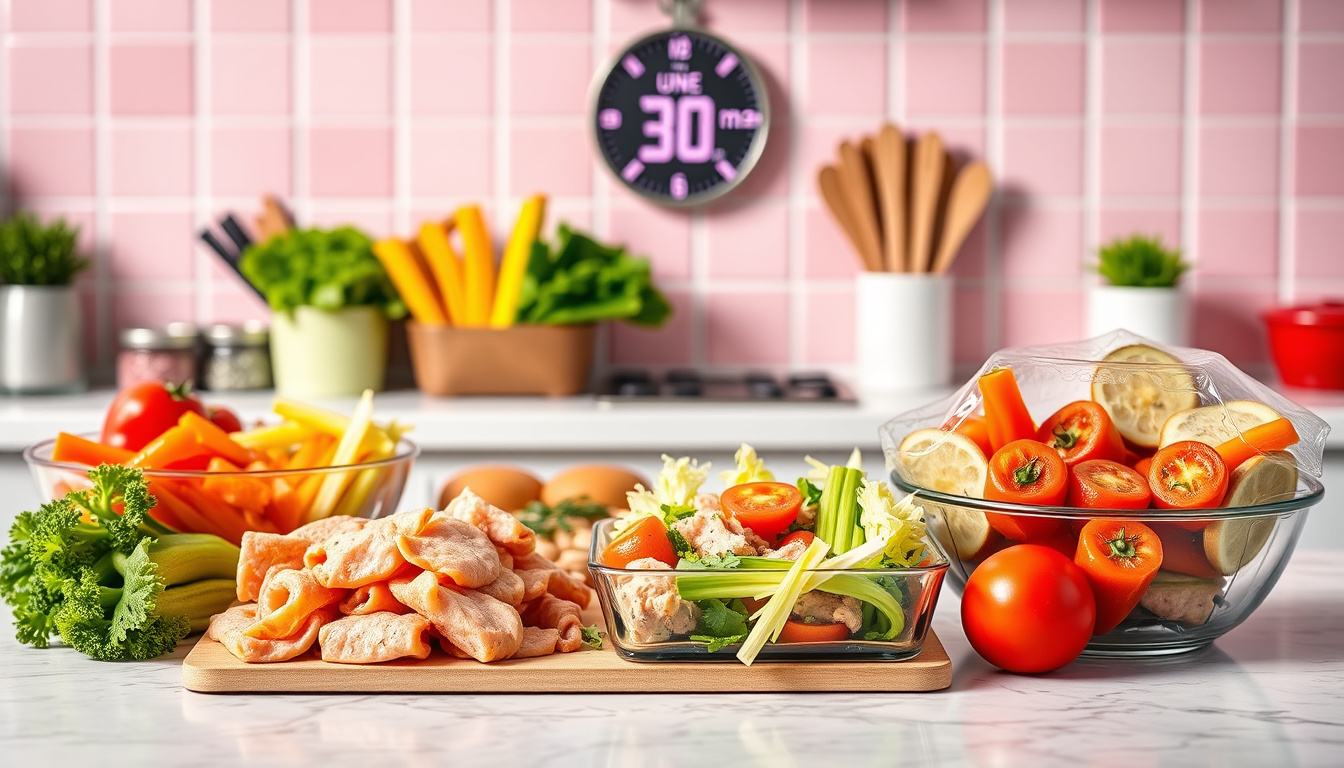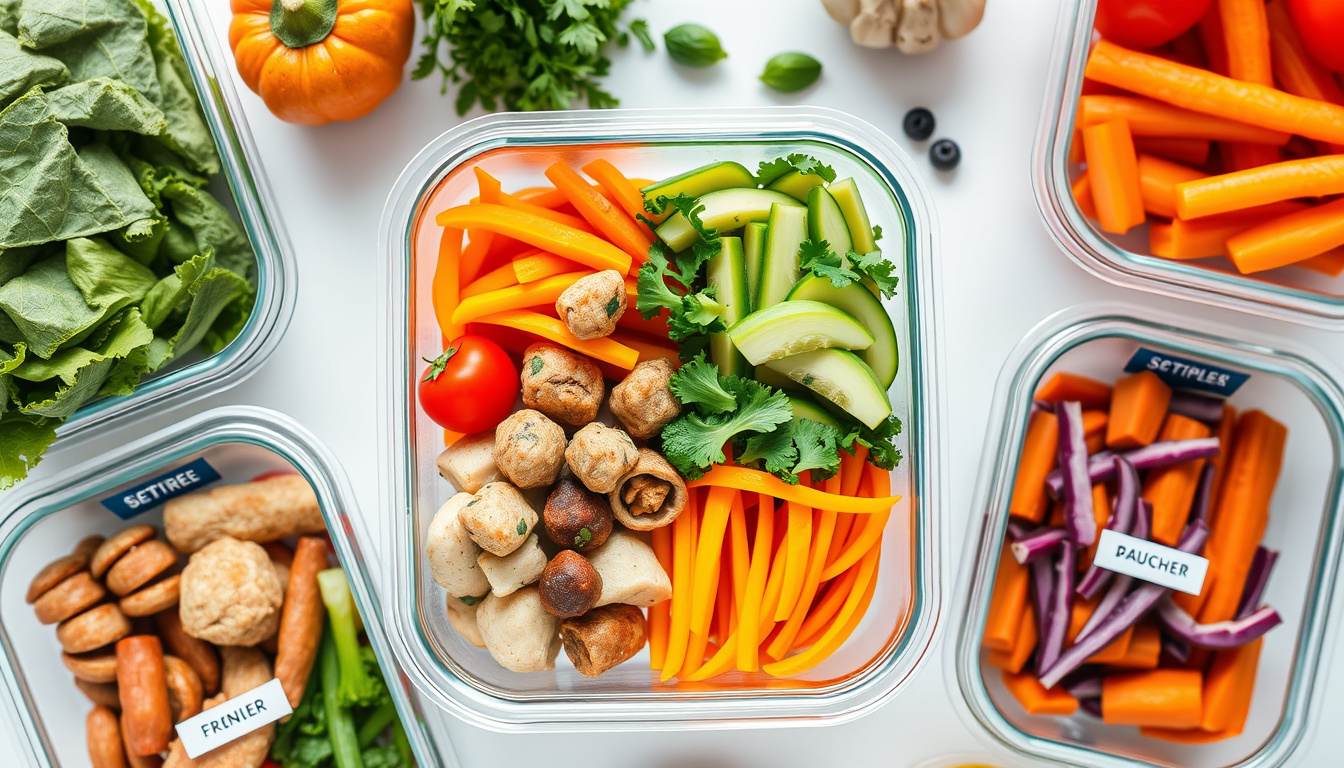Meal prep is an essential strategy for anyone looking to save time, eat healthier, and reduce food waste throughout the busy week. One effective method within this practice is separating protein and vegetables during meal preparation. This not only allows for greater versatility in your meals but also ensures that each component retains its freshness and flavor. Here’s a comprehensive guide to perfecting this separation for delicious, balanced dishes.
Why Separate Protein and Veggies?
The primary reason to separate protein from vegetables in meal prep is to enhance the quality and longevity of each component. Proteins, whether they are chicken, beef, tofu, or legumes, often require different cooking methods and storage considerations compared to vegetables. Here are a few key benefits of this approach:
-
Maximized Freshness: Keeping vegetables and proteins in separate containers allows you to store them in ways that best suit their individual preservation needs. For instance, some proteins may require airtight containers to prevent spoilage, while certain vegetables thrive in breathable bags.
-
Culinary Versatility: Cooking proteins ahead of time gives you the freedom to mix and match them with different vegetables throughout the week, preventing meal fatigue and enhancing variety.
-
Easier Portion Control: By separating these components, you can better manage portion sizes for proteins and vegetables, adhering to nutritional goals more easily.
Tips for Effective Separation
Here is a step-by-step approach to help you separate proteins and vegetables efficiently:
1. Plan Your Meals
Start by planning your weekly menu. Choose a selection of proteins and vegetables that can complement each other across various meals. For example, grilled chicken can work in salads, wraps, or stir-fries when paired with an assortment of veggies like bell peppers, spinach, or zucchini.
2. Choose the Right Containers
Selecting appropriate containers is crucial. Here’s a breakdown:
-
Proteins: Use airtight containers to prevent moisture loss. Glass containers are ideal for marinated proteins, while BPA-free plastic boxes work well for cooked meats. Consider portioning them out for easy grab-and-go meals.
-
Vegetables: Depending on the type, use containers that can allow for ventilation or absorb moisture, such as breathable produce bags. Leafy greens might do well in a container lined with a paper towel to absorb excess moisture.
3. Batch Cook Your Proteins
Cook your proteins in bulk at the beginning of the week. Here are some easy methods:
- Grilling: This method is quick and adds a great flavor to chicken or other meats.
- Baking: For simple cleanup, bake your seasoned proteins in the oven.
- Sautéing: A quick way to cook fish or shrimp that works well with stir-fried veggie dishes.

4. Prepare Your Vegetables
Next, wash, chop, and prepare your vegetables:
- Wash and Dry: Always ensure your vegetables are completely dry before storing to avoid spoiling.
- Chop Simplistically: Many vegetables can be prepped by chopping them in versatile sizes—dice bell peppers for salads, and slice them for wraps, for instance.
- Store Smart: Keep delicate veggies like greens out of heavier or moisture-rich ones, as this can lead to wilting.
5. Bolster Flavor with Sauces and Seasonings
Creating sauces or dressings can keep meals exciting without altering the essential components. Prepare a few versatile options like:
- Vinaigrettes: Perfect for drizzling over salads with your protein.
- Salsas: These can add zest to simple chicken or fish dishes without much fuss.
- Dip Sauces: Think hummus or tzatziki, great for pairing with raw veggies for healthy snacking.
Meal Ideas Using Separated Components
Once you have your proteins and veggies prepped and stored separately, crafting delicious meals becomes effortless:
-
Protein-Packed Bowls: Start with grains or leafy greens, add a protein source, and load up on vegetables, topped with your choice of sauce.
-
Variety in Salads: Mix different greens with prepped veggies and protein, adjusting dressings as desired for different flavors throughout the week.
-
Satisfying Wraps: Use your prepped proteins and sliced vegetables in wraps, adding fresh herbs or spreads for a satisfying lunch.
-
Stir-Fry Simplicity: Quickly sauté your chosen veggies with a protein of your choice for a nutritious dinner, ready in under 30 minutes.
Final Thoughts
Mastering the art of separating proteins and vegetables in meal prep allows for delicious meals that are full of flavor, texture, and nutrition. By adopting this strategy, you’ll enhance your weekly cooking routine, save time, and prevent food waste—all while keeping your meals varied and enjoyable. Dive into your meal prep journey with confidence, armed with the knowledge of how to best separate and store your culinary essentials! Happy prepping!
>> Chest Freezer Reviews <<
>> Upright Freezer Reviews <<

